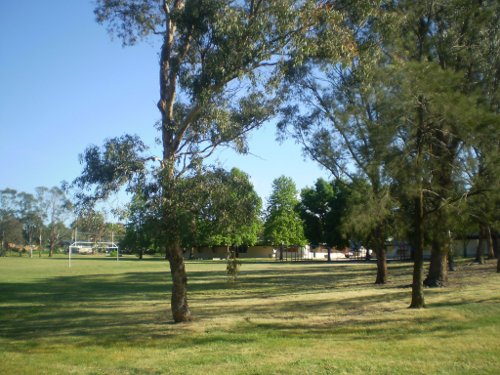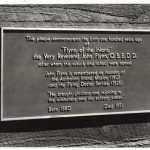Six years after the closure of Flynn Primary School, the central school precinct of Flynn is firmly in the spotlight again for heritage and community issues as part of a Supreme Court case set for hearing next week (6 February).
The Flynn Primary School precinct has gained wide recognition and acknowledgement of its heritage value based on the stunning architecture, revolutionary open-plan design, and strong cultural and historical associations including with John Flynn and the Flying Doctors and architect, Dr Enrico Taglietti.
The outpouring of community appreciation of the architectural form of the Flynn buildings and their function as the community hub or ‘village’ has been so great that it moved Dr Taglietti to call it “My most important work”.
It was this support that led the John Flynn Community Group to nominate Flynn Primary School, Preschool, health centre and surrounds for heritage listing in December 2007.
Regardless, the ACT Heritage Council decided not to grant provisional heritage listing and protection to the Flynn precinct, a decision upheld by the ACT Civil and Administrative Tribunal and now under appeal in the Supreme Court.
Controversially, the Heritage Council said in its original decision that it was not clear who valued Flynn, objecting in the Tribunal to any expressions of community value about the precinct.
This refusal to list Flynn so far is in direct contradiction to the findings of an independent assessment that the Heritage Council had commissioned from the Australian Institute of Architects, who have since placed Flynn on their Register of Significant Twentieth Century Architecture.
It also disregards evidence of a petition of more than 600 signatories, supporting letters from groups across ACT and Australia including the Royal Institute of Architects, the Flynn P&C, academics from the University of Canberra, the Royal Flying Doctor Service, the Presbyterian Church, two former ACT Chief Ministers, and the National Trust.
Where else can a measure or understanding of community value or what is culturally or socially valuable be found but in those who hold the value?
It is a far-reaching decision that all this support carries little weight compared to the views of the ACT Heritage Council, unless support from the “ACT community” as whole can be shown. It effectively places heritage decisions beyond challenge, setting the Heritage Council up as the sole arbiter of community value.
This definition of “the community” will be a key point of argument in the Supreme Court, and the decision, either way, could have significant implications for future ACT Government consultation processes.
Of course, this all assumes that the Supreme Court gets to make a decision on the key matters of law because the ACT Government’s efforts to gazump the action have been as persistent as the Flynn community’s actions have been brave and expensive. The Heritage Council may argue the appeal should not even be heard.
Perhaps as retribution for the Flynn P&C’s involvement in fighting school closures, the government appears to be pressing ahead with efforts to have the P&C removed as a party to the current action.
This ignores the P&C’s role, past and present, as one of the main stakeholders in the site and custodians of 40 years of records and knowledge upon which the Flynn heritage claims are based.
The Flynn groups have endured much to get this far, including a demand to post security of costs of $40,000. This is big money for community groups that typically run fetes and sausage sizzles to fund shoestring operations.
Such a prohibitive up-front payment is certainly not in the spirit of model litigant behaviour espoused by the ACT Government. Indeed, the ACT Government has now admitted to using this tactic only three times in the past ten years, and two of these have been in relation to Flynn.
But the final test will come next week when Flynn will argue, if allowed, that the community has as much of a stake in valuing heritage as the ACT Heritage Council. New evidence (not available before now) will be presented to support the claim.
It remains to be seen whether the Heritage Council will embrace community value of the Flynn precinct or oppose it and the entire appeal, as it has up until now.
Through the Supreme Court action, the Flynn groups are seeking a remaking of the decision that would see the Flynn Primary School precinct registered and afforded proper protection under the ACT Heritage Act.
For the ACT community, Flynn will be a barometer for what others might be able to expect in the discussion, consideration and treatment of heritage and the community.
Roger Nicoll
Printed in the Canberra Times as Flynn ‘battlers’ lock horns with heritage council.



